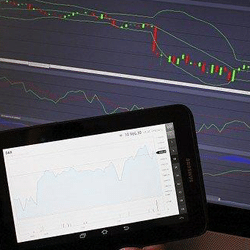
MACD or Moving Average Convergence Divergence is an indicator in trading, used mainly to measure the potential entry and exit points for traders. It does this by comparing short-term and long term price trends. This indicator allows analysts to derive future price movements and place trades for profits.
MACD is a trend or momentum indicator and as a momentum indicator, it responds to the speed of price movements. Traders use MACD to determine the trend’s direction. The MACD histogram, which is the difference between the MACD and the 9 days EMA, can be used to spot MACD Divergence.
Table of Contents
Forex Traders can use the MACD Divergence as a trading Strategy by following some specific rules.
- Traders have to watch out for any new swing highs or swing lows that might occur.
- The next step involves drawing a trend line to connect the two swing highs or swing lows.
- The Trader then has to scan the MACD histogram to see if he/she can spot a divergence.
- For short entry, if a divergence is spotted, the trader has to wait for the present candlestick to close. A sell stop order should be placed just under the low of the candlestick
- Consequently, for a long entry, the trader should wait for the candlestick to close, placing the buy stop order above the high of the candlestick
- Traders should set take profit targets. Options include 3 times the amount risked, 3 times the distance from the trough to the new swing high for a short entry or use Fibonacci to calculate profit targets.
Using Reversal Candlesticks for Trade Entry Confirmation
When using the MACD divergence strategy, it is a good idea to use Candlesticks for the confirmation of trades. Traders have to watch out for reversal candlesticks such as hammer, piercing line, inside bar or dojis for long entries. Consequently, they need to watch out for the inside bar, shooting star, dark cloud and dojis for short entries.
Traders should wait for a reversal candlestick to form after a divergence trading signal is given. They should then enter their order to go either long or short.
Why is MACD Divergence an Unreliable Signal?
MACD Divergence becomes an unreliable signal due to indicator divergence. Indicator divergence occurs when a momentum or oscillator indicator, such as the MACD indicator, doesn’t confirm price movement. One of the main problems with divergence is a false positive when it signals a reversal when no actual reversal occurs. Also, divergence doesn’t forecast all reversals. So MACD Divergence has a tendency of predicting not enough real price reversals while predicting too many reversals that don’t occur in the first place. The price movement that follows is almost always slow after a sharp price move, even when the trend occurs.
Another false positive divergence occurs when the price moves sideways. This usually happens in a triangle or range pattern, after a trend. A slowdown in the price causes the MACD to pull away from its previous extremes. It gravitates towards the zero lines.
The MACD will always show divergence when the price moves sideways. This is due to the fact that the MACD always tends to gravitate towards the zero line, away from the previous extreme highs or lows. These signals are useless as the MACD simply reacts to the moving averages moving back and forth.
How to Improve MACD Divergence using Price Action Analysis
One way to aid decision making while using MACD is to use price action. Some basic guidelines have been added below.
- Even when the price movement slows down or moves sideways, it can trigger divergence on the MACD. Traders should not take it as a sign of a reversal.
- Traders should not exit a current trade merely because of the divergence. Divergence isn’t a good timing indicator, and the expected reversal may not occur.
- When looking to enter a trade based solely on a divergence, traders should always wait for the price to break the current trend. This confirms the divergence.
- Price action should always be trusted more than divergence. For instance, traders should heed the warning of price breaking out of a prior trend, even if divergence wasn’t present at the time of reversal.
Disadvantages of MACD Divergence When applied in Forex Strategies
- As prices have a general tendency to burst up or down, knocking a trader’s stop-loss orders, MACD divergence may not be accurate. It can force traders out of a trade prematurely before it either goes up or falls down. The sustained price move may have presented a good trading opportunity for profits, which the trader loses out if he/she uses MACD divergence.
- MACD is a lagging indicator. Long price movements may not be detected by it for a long time after they’ve occurred.
- Trading with MACD in forex may go against what the trader experiences in a real-time trading environment. For instance, confusion can be caused when the trader sees the price moving up in an uptrend, while the divergence prompts him/her to press the sell button.
- Spotting a MACD divergence setup can be troublesome for newer, novice forex traders.
Conclusion
Divergence shows the price losing momentum, relative to prior price swings. However, it’s not always indicative of a price reversal. One thing to be noted is that divergence almost always occurs when the price makes a sharp move in the trending direction, followed by a sideways movement.
Despite the limitations of using MACD divergence in forex, there are some pronounced advantages as well. If the trading setup is made successfully, the trader has a high chance of entering a trade at the very right time. It can help traders enter a long trade at the very bottom of a swing, or enter a short trade at the very top of a swing. This allows for buying at the extreme bottom, and sell at the very top.








Leave a Reply